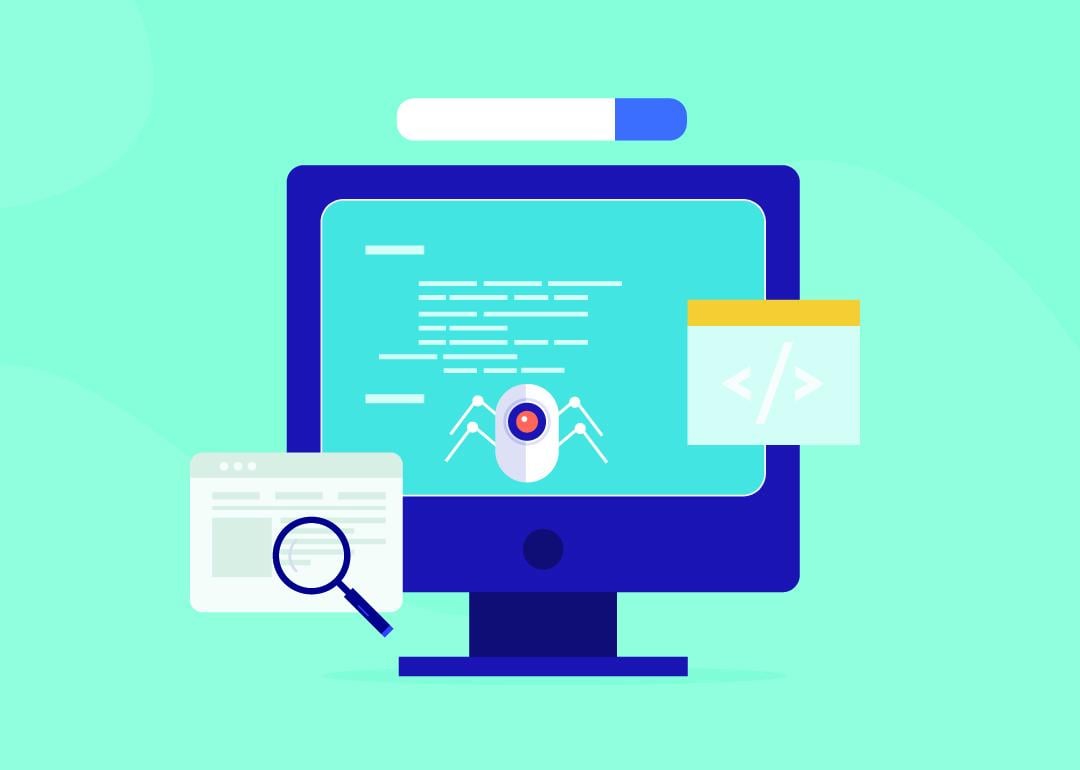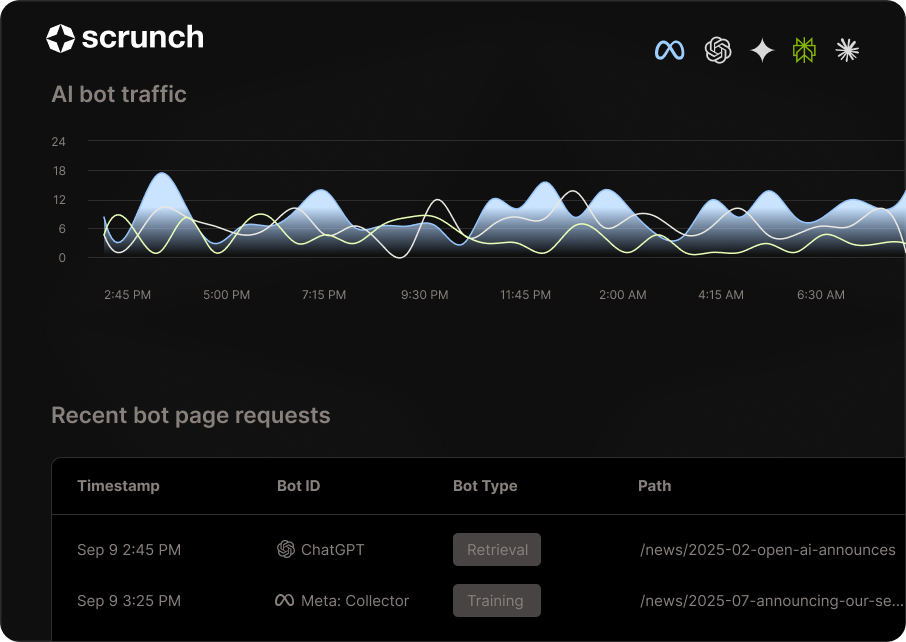
Your most important site visitor is no longer human
Your most important site visitor is no longer human
One of the most important ways marketers measure success is by the number of people landing on their websites. But that traffic is dropping at double-digit rates, and the trend shows no sign of slowing. HubSpot—the long-time gold standard for B2B SEO—has seen its blog traffic collapse by around 70–75%. The pain is being felt across industries: According to Pew Research, users are half as likely to click on any link when an AI Overview appears in the search results.
The demand for information hasn’t gone away; people still have the same questions they’ve always had, they’re just taking them elsewhere, Scrunch reports.
Instead of clicking through links from the search results page, users now go straight to ChatGPT and other AI platforms, or get direct answers from AI overviews. Around 60% of online searches now end with zero clicks. And that’s because AI offers a superior experience to traditional browsing: it’s faster, cleaner, and free from the clutter of pop-ups, autoplay videos, and keyword-stuffed paragraphs. Consumers aren’t looking back.
As behavior shifts from search to AI, your most important site visitors today are no longer human—they’re the AI bots crawling your content to decide whether your brand gets cited in an answer.
Many marketers want to believe that AI is just another distribution channel, something to slot in alongside SEO, paid ads, and influencer campaigns. But it’s not. People aren’t using AI as a stepping stone to your website, as they did with search—they’re posing questions, comparing options, and making a decision all without switching tabs.
In short, the whole marketing funnel is collapsing into a conversation with AI.
That means the foundation of marketing strategy is now on shaky ground. The best marketers have always been students of human psychology—tapping into curiosity, urgency, or fear of missing out to nudge someone closer to a purchase.
Websites are designed with those instincts in mind: social proof to build trust, limited-time offers to spark urgency, and animations or videos to capture attention. Every design choice and headline has been crafted to appeal to the person on the other side of the screen. But AI isn’t persuadable. It doesn’t care about your animations, offers, or brand voice. It only cares whether your information is clear, structured, and easy to retrieve.
If you could see AI bot traffic in your analytics, you’d see the shift already underway. Retrieval agents dispatched by ChatGPT, Perplexity, and others are hitting sites in real time, often outnumbering human visits. And none of the mechanics your site is built around—forms to capture leads, pixels for retargeting, optimized purchase buttons—work on them. All the tenets of funnel design simply don’t apply. To an AI, your site isn’t an experience to be navigated; it’s a dataset to be mined.

That means your job is no longer to persuade people but to inform bots. An AI agent skips right over your slick animation and is color blind to your brand guidelines—it cares about clarity, structure, and whether your content can be easily retrieved, parsed, and summarized in response to a user’s question.
If your pricing table renders only through JavaScript, if your pricing table has a bunch of superfluous code, or your FAQ is missing, the AI won’t see it—and it won’t cite you. Today’s optimization is less about funnel design and more about machine readability. You can almost think of AI bots as your business development reps, fielding questions from millions of potential customers and deciding what gets repeated back in the conversation. If they can’t easily find and understand your information, you’re leaving those conversations to competitors.
Of course, most websites were never built with this new kind of visitor in mind. To stay relevant, businesses will need a game plan for how to reach this machine audience. That might start with cleaning up technical blockers—making sure bots can actually see your content, rendering text without JavaScript, and structuring pages so information is easy to parse. But in the long run, it’s going to require something bigger: rethinking what a website even is when the primary audience isn’t human.
We’re already seeing early signs of this shift. Brands are experimenting with stripped-down, AI-friendly versions of their sites—stripping away the visual flourishes in favor of clarity, structure, and machine readability. Think of it less like a storefront window for people and more like a briefing document for bots: direct, unambiguous, and optimized for retrieval.
It raises an intriguing question: What would an AI-first version of your website look like? The answer may not be a single site at all, but two parallel experiences—one crafted for humans, the other for AI agents who now mediate the majority of consumer discovery.
This story was produced by Scrunch and reviewed and distributed by Stacker.



